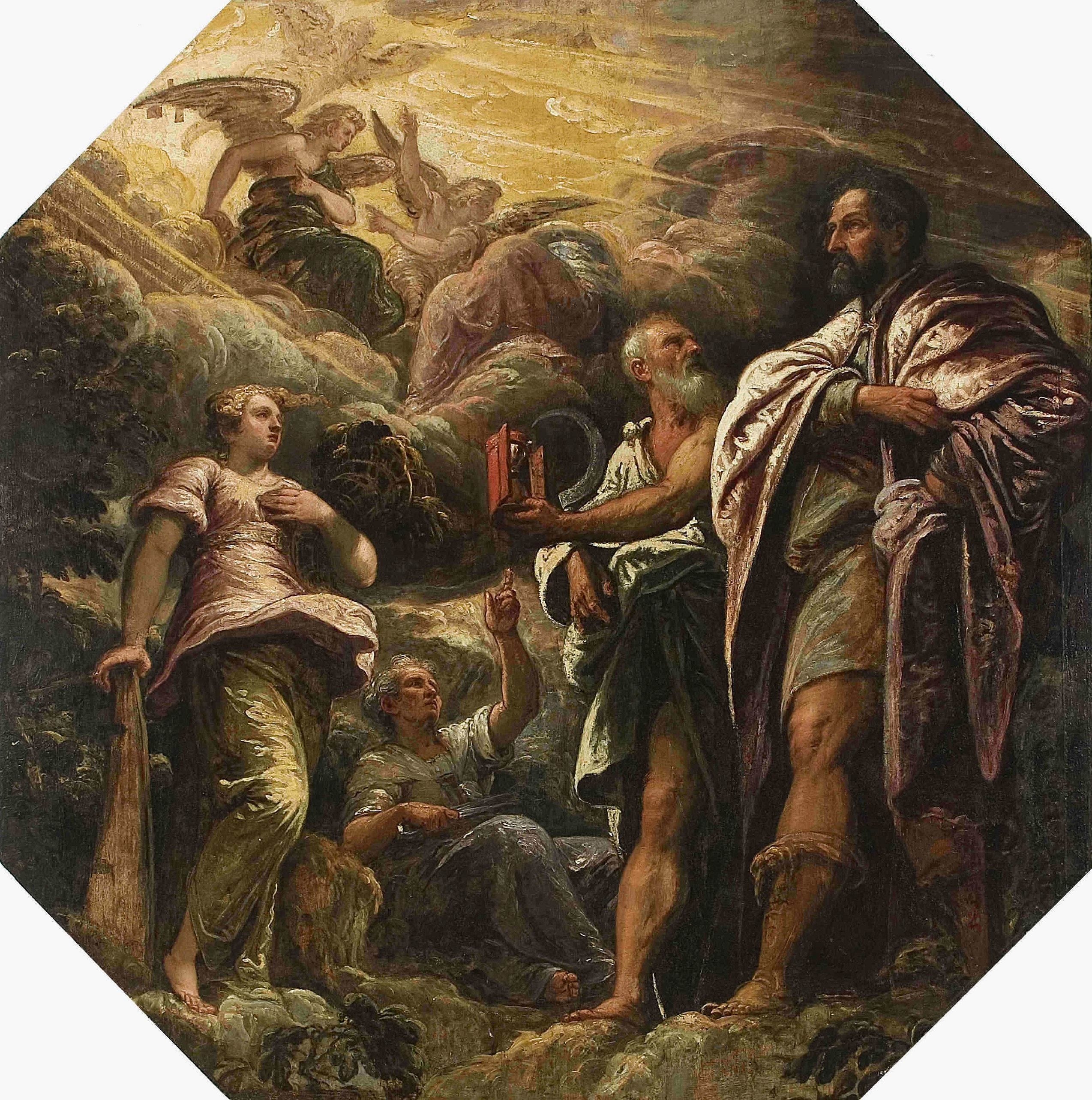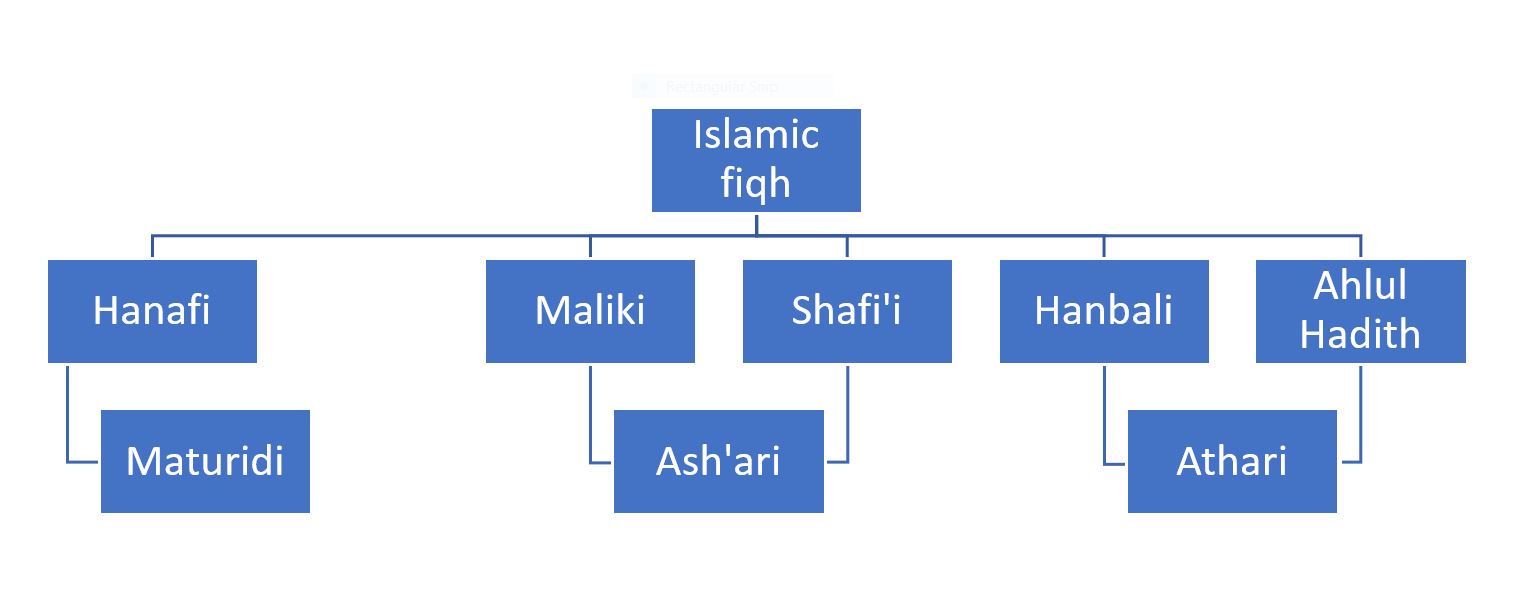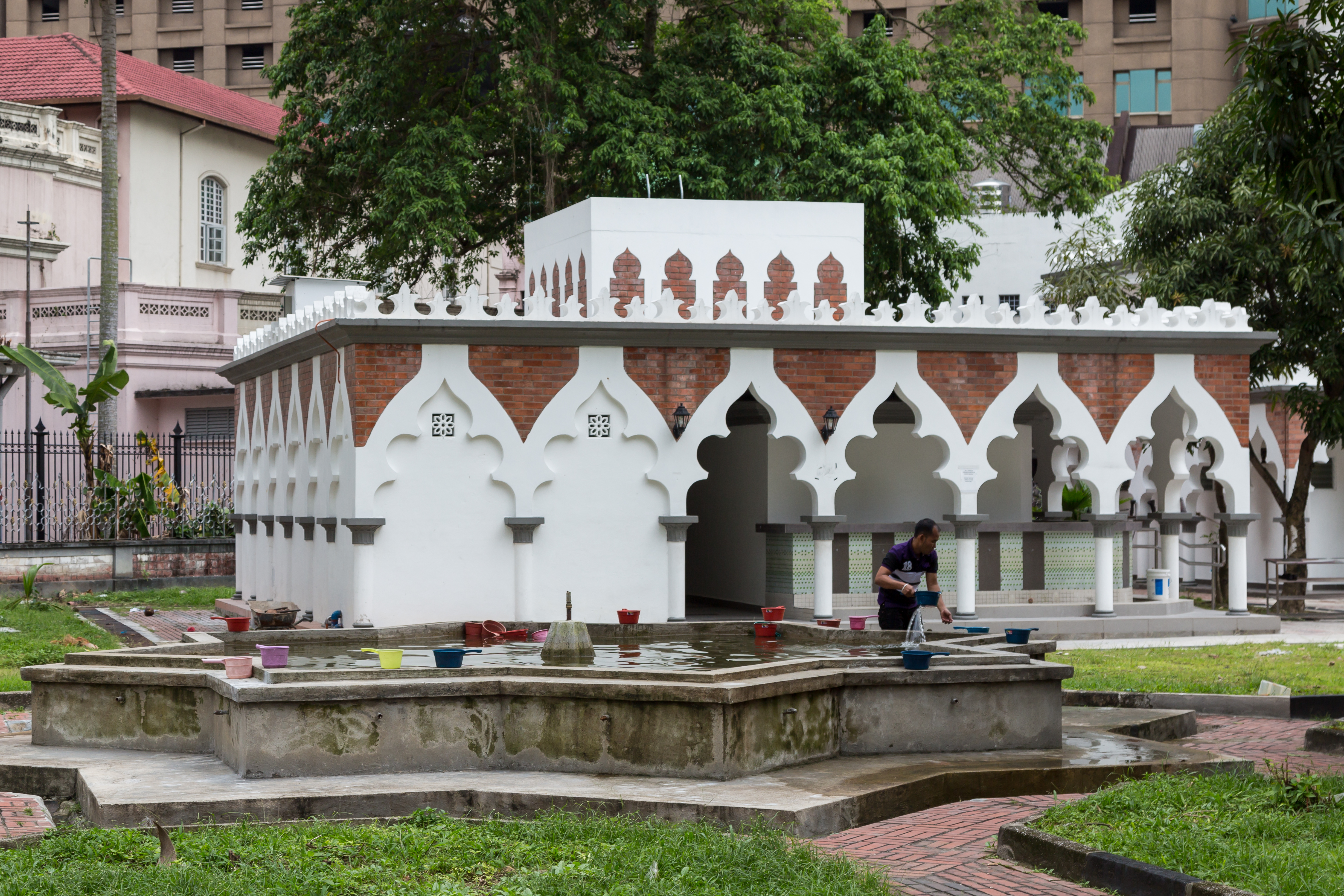|
Hilyat Al-Muttaqin
''Hilyat al-Muttaqin'' (''The adornment of the God-fearing'', ar, حلیه المتقین) is a Hadith book of Muhammad Baqir al-Majlisi. This work is written in Persian about Islamic morality, instructions and traditions. It was translated into English by Sayyid Athar Husayn S.H. Rizvi and published by Ansariyan Publications in 2013. The aim of writing According to book's foreword, it was written because of a group of Muslims asked Majlisi to write a Persian book in the Islamic morality, instructions and traditions from the hadith of Ahl al-Bayt. Date of writing According to a manuscript, the date of writing of this work is 1671, But in another book has been mentioned to 1668-9. Content and chapters The book has 14 chapters about individual and collective morality and some Fiqh rulings, Duas and practices and had an extra chapter about some etiquette miscellaneous and their benefits. The titles of chapters are mentioned below: * Etiquette of clothing, * Etiquette of using ... [...More Info...] [...Related Items...] OR: [Wikipedia] [Google] [Baidu] |
Hadith
Ḥadīth ( or ; ar, حديث, , , , , , , literally "talk" or "discourse") or Athar ( ar, أثر, , literally "remnant"/"effect") refers to what the majority of Muslims believe to be a record of the words, actions, and the silent approval of the Islamic prophet Muhammad as transmitted through chains of narrators. In other words, the ḥadīth are transmitted reports attributed to what Muhammad said and did. Hadith have been called by some as "the backbone" of Islamic civilization, J.A.C. Brown, ''Misquoting Muhammad'', 2014: p.6 and for many the authority of hadith as a source for religious law and moral guidance ranks second only to that of the Quran (which Muslims hold to be the word of God revealed to Muhammad). Most Muslims believe that scriptural authority for hadith comes from the Quran, which enjoins Muslims to emulate Muhammad and obey his judgements (in verses such as , ). While the number of verses pertaining to law in the Quran is relatively few, hadith are ... [...More Info...] [...Related Items...] OR: [Wikipedia] [Google] [Baidu] |
Muhammad Baqir Al-Majlisi
Mohammad Baqer Majlesi (b. 1037/1628-29 – d. 1110/1699) ( fa, علامه مجلسی ''Allameh Majlesi''; also Romanized as: Majlessi, Majlisi, Madjlessi), known as Allamah Majlesi or Majlesi Al-Thani (Majlesi the Second), was a renowned and very powerful Iranian Twelver Shia Scholar and Thinker, during the Safavid era. He has been described as "one of the most powerful and influential Shi'a ulema of all time", whose "policies and actions reoriented Twelver Shia'ism in the direction that it was to develop from his day on." He was buried next to his father in a family mausoleum located next to the Jamé Mosque of Isfahan. Early life and education Born in Isfahan in 1617, his father, Mulla Mohammad Taqi Majlesi (''Majlesi-ye Awwal''—Majlesi the First, 1594 AD-1660 AD), was a cleric of Ja'fari jurisprudence, Islamic jurisprudence. The genealogy of his family is traced back to Abu Noaym Ahámad b. Abdallah Esfahani (d. 1038 AD), the author, inter alia, of a History of Isfahan, en ... [...More Info...] [...Related Items...] OR: [Wikipedia] [Google] [Baidu] |
Persian Language
Persian (), also known by its endonym and exonym, endonym Farsi (, ', ), is a Western Iranian languages, Western Iranian language belonging to the Iranian languages, Iranian branch of the Indo-Iranian languages, Indo-Iranian subdivision of the Indo-European languages. Persian is a pluricentric language predominantly spoken and used officially within Iran, Afghanistan, and Tajikistan in three mutual intelligibility, mutually intelligible standard language, standard varieties, namely Iranian Persian (officially known as ''Persian''), Dari, Dari Persian (officially known as ''Dari'' since 1964) and Tajik language, Tajiki Persian (officially known as ''Tajik'' since 1999).Siddikzoda, S. "Tajik Language: Farsi or not Farsi?" in ''Media Insight Central Asia #27'', August 2002. It is also spoken natively in the Tajik variety by a significant population within Uzbekistan, as well as within other regions with a Persianate society, Persianate history in the cultural sphere of Greater Ira ... [...More Info...] [...Related Items...] OR: [Wikipedia] [Google] [Baidu] |
Morality
Morality () is the differentiation of intentions, decisions and actions between those that are distinguished as proper (right) and those that are improper (wrong). Morality can be a body of standards or principles derived from a code of conduct from a particular philosophy, religion or culture, or it can derive from a standard that a person believes should be universal. Morality may also be specifically synonymous with " goodness" or "rightness". Moral philosophy includes meta-ethics, which studies abstract issues such as moral ontology and moral epistemology, and normative ethics, which studies more concrete systems of moral decision-making such as deontological ethics and consequentialism. An example of normative ethical philosophy is the Golden Rule, which states: "One should treat others as one would like others to treat oneself." Immorality is the active opposition to morality (i.e. opposition to that which is good or right), while amorality is variously defined ... [...More Info...] [...Related Items...] OR: [Wikipedia] [Google] [Baidu] |
Foreword
A foreword is a (usually short) piece of writing, sometimes placed at the beginning of a book or other piece of literature. Typically written by someone other than the primary author of the work, it often tells of some interaction between the writer of the foreword and the book's primary author or the story the book tells. Later editions of a book sometimes have a new foreword prepended (appearing before an older foreword if there was one), which might explain in what respects that edition differs from previous ones. When written by the author, the foreword may cover the story of how the book came into being or how the idea for the book was developed, and may include thanks and acknowledgments to people who were helpful to the author during the time of writing. Unlike a preface, a foreword is always signed. Information essential to the main text is generally placed in a set of explanatory notes, or perhaps in an introduction, rather than in the foreword or like preface. Th ... [...More Info...] [...Related Items...] OR: [Wikipedia] [Google] [Baidu] |
Muslim
Muslims ( ar, المسلمون, , ) are people who adhere to Islam, a monotheistic religion belonging to the Abrahamic tradition. They consider the Quran, the foundational religious text of Islam, to be the verbatim word of the God of Abraham (or ''Allah'') as it was revealed to Muhammad, the main Islamic prophet. The majority of Muslims also follow the teachings and practices of Muhammad (''sunnah'') as recorded in traditional accounts ('' hadith''). With an estimated population of almost 1.9 billion followers as of 2020 year estimation, Muslims comprise more than 24.9% of the world's total population. In descending order, the percentage of people who identify as Muslims on each continental landmass stands at: 45% of Africa, 25% of Asia and Oceania (collectively), 6% of Europe, and 1% of the Americas. Additionally, in subdivided geographical regions, the figure stands at: 91% of the Middle East–North Africa, 90% of Central Asia, 65% of the Caucasus, 42% of South ... [...More Info...] [...Related Items...] OR: [Wikipedia] [Google] [Baidu] |
Ahl Al-Bayt
Ahl al-Bayt ( ar, أَهْل ٱلْبَيْت, ) refers to the family of the Islamic prophet Muhammad, but the term has also been extended in Sunni Islam to apply to all descendants of the Banu Hashim (Muhammad's clan) and even to all Muslims. In Shia Islam, the term is limited to Muhammad; his daughter Fatima, his cousin and son-in-law Ali, and their two sons, Hasan and Husayn. A common Sunni view adds Muhammad's wives to those five. While all Muslims revere the Ahl al-Bayt, it is the Shia who hold the Ahl al-Bayt in the highest esteem by regarding them as the rightful leaders of the Muslim community. The Twelver Shia also believe in the redemptive power of the pain and martyrdom endured by the Ahl al-Bayt, particularly by Husayn. Definition When ( ar, أهل, label=none) appears in construction with a person, it refers to his blood relatives but the word also acquires wider meanings with other nouns. In particular, () is translated as habitation and dwelling, and thus ... [...More Info...] [...Related Items...] OR: [Wikipedia] [Google] [Baidu] |
Fiqh
''Fiqh'' (; ar, فقه ) is Islamic jurisprudence. Muhammad-> Companions-> Followers-> Fiqh. The commands and prohibitions chosen by God were revealed through the agency of the Prophet in both the Quran and the Sunnah (words, deeds, and examples of the Prophet passed down as hadith). The first Muslims (the Sahabah or Companions) heard and obeyed, and passed this essence of Islam to succeeding generations ('' Tabi'un'' and '' Tabi' al-Tabi'in'' or successors/followers and successors of successors), as Muslims and Islam spread from West Arabia to the conquered lands north, east, and west, Hoyland, ''In God's Path'', 2015: p.223 where it was systematized and elaborated Hawting, "John Wansbrough, Islam, and Monotheism", 2000: p.513 The history of Islamic jurisprudence is "customarily divided into eight periods": El-Gamal, ''Islamic Finance'', 2006: pp. 30–31 *the first period ending with the death of Muhammad in 11 AH. *second period "characterized by personal interp ... [...More Info...] [...Related Items...] OR: [Wikipedia] [Google] [Baidu] |
Etiquette
Etiquette () is the set of norms of personal behaviour in polite society, usually occurring in the form of an ethical code of the expected and accepted social behaviours that accord with the conventions and norms observed and practised by a society, a social class, or a social group. In modern English usage, the French word ' (label and tag) dates from the year 1750. History In the third millennium BCE, the Ancient Egyptian vizier Ptahhotep wrote '' The Maxims of Ptahhotep'' (2375–2350 BC), a didactic book of precepts extolling civil virtues, such as truthfulness, self-control, and kindness towards other people. Recurrent thematic motifs in the maxims include learning by listening to other people, being mindful of the imperfection of human knowledge, and that avoiding open conflict, whenever possible, should not be considered weakness. That the pursuit of justice should be foremost, yet acknowledged that, in human affairs, the command of a god ultimately prevails ... [...More Info...] [...Related Items...] OR: [Wikipedia] [Google] [Baidu] |
Henna
Henna is a dye prepared from the plant '' Lawsonia inermis'', also known as the henna tree, the mignonette tree, and the Egyptian privet, the sole species of the genus ''Lawsonia''. ''Henna'' can also refer to the temporary body art resulting from the staining of the skin from the dyes. After henna stains reach their peak color, they hold for a few days, then gradually wear off by way of exfoliation, typically within one to three weeks. Henna has been used since antiquity in ancient Egypt and Indian subcontinent to dye skin, hair and fingernails, as well as fabrics including silk, wool, and leather. Historically, henna was used in West Asia including the Arabian Peninsula and in Carthage, other parts of North Africa, West Africa, Central Africa, the Horn of Africa and the Indian subcontinent. The name "henna" is used in other skin and hair dyes, such as ''black henna'' and ''neutral henna'', neither of which is derived from the henna plant. Etymology The English name "he ... [...More Info...] [...Related Items...] OR: [Wikipedia] [Google] [Baidu] |
Ghusl
( ar, غسل ', ) is an Arabic term to the full-body ritual purification mandatory before the performance of various rituals and prayers, for any adult Muslim after sexual intercourse/ejaculation or completion of the menstrual cycle. The washing is also recommended (i.e. it is ''mustahabb'') before Jumu'ah and Eid prayers, before entering the '' ihram'' in preparation for '' Hajj'', after having lost consciousness and after formally converting. Sunni Muslims also perform the ablution before '' Namaz-e-tawbah'' (Prayer of Repentance). ''Ghusl'' is often translated as "full ablution", as opposed to the "partial ablution" of '' wudu'' that Muslims perform after lesser impurities such as urination, defecation, flatulence, deep sleep, and light bleeding. It is a ritual bath. Types by purpose Ghusl becomes obligatory for seven causes, and the ''ghusl'' for each of these different causes has different names: *''Ghusl Janabat'' is ''ghusl'' performed after sexual intercourse/ejac ... [...More Info...] [...Related Items...] OR: [Wikipedia] [Google] [Baidu] |
Hijama
Cupping therapy is a form of alternative medicine in which a local suction is created on the skin with the application of heated cups. Its practice mainly occurs in Asia but also in Eastern Europe, the Middle East, and Latin America. Cupping has been characterized as a pseudoscience and its practice as quackery. Cupping practitioners attempt to use cupping therapy for a wide array of medical conditions including fevers, chronic low back pain, poor appetite, indigestion, high blood pressure, acne, atopic dermatitis, psoriasis, anemia, stroke rehabilitation, nasal congestion, infertility, and menstrual period cramping. Despite the numerous ailments for which practitioners claim cupping therapy is useful, there is insufficient evidence it has any health benefits, and there are some risks of harm, especially from wet cupping and fire cupping. Bruising and skin discoloration are among the adverse effects of cupping and are sometimes mistaken for child abuse. In rare instances, th ... [...More Info...] [...Related Items...] OR: [Wikipedia] [Google] [Baidu] |









